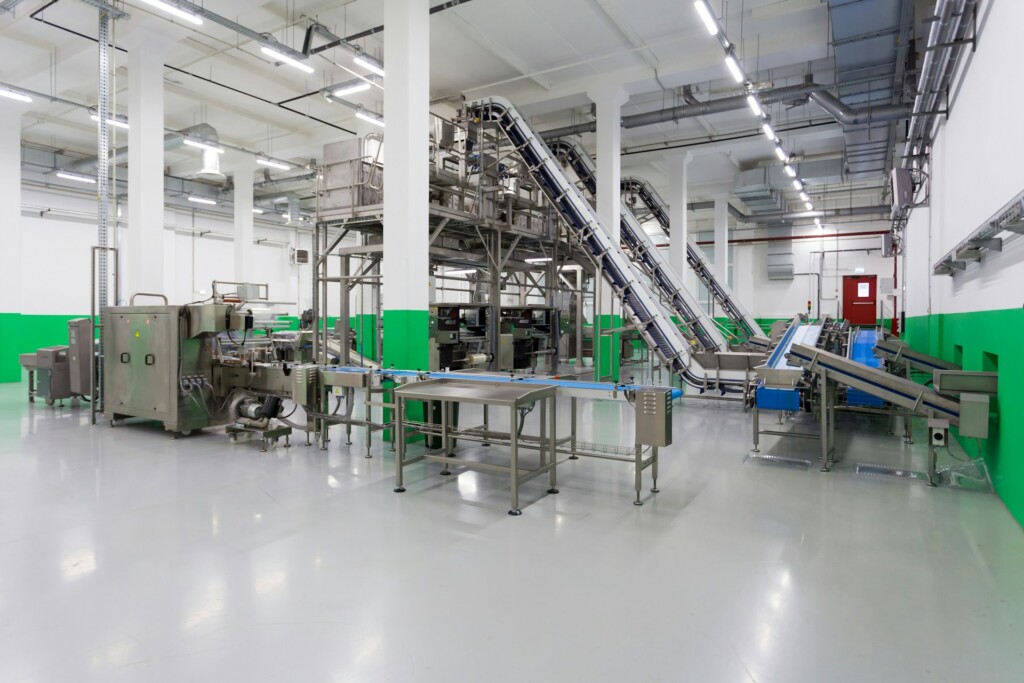Manufacturing is the backbone of nearly every industry in the world, evolving relentlessly to meet growing demands. Modern manufacturing technology has brought about significant advancements in how goods are made, transforming tasks with processes that are faster, safer, and more cost-effective.
But what precisely makes these systems so revolutionary? What elements drive the leap to operational efficiency and productivity in competitive markets?
This article will break down how advanced manufacturing technology, industrial automation, and other tools are revolutionizing production efficiency, offering manufacturers robust solutions that pave the way for sustainable growth.
By the end, you’ll have a clearer understanding of how leveraging these innovations can empower decision-making in the manufacturing space.
Investing in Digital Twins for Predictive Maintenance
What Are Digital Twins?
Digital twins are virtual replicas of physical machines or processes that simulate, analyze, and predict operational performance in real-time. This advanced tool allows manufacturers to foresee and address potential disruptions before they occur.
How Does This Improve Efficiency?
Digital twins enhance production efficiency by enabling predictive maintenance strategies. Sensors monitor the health of production equipment, flagging signs of wear before catastrophic failure occurs.
This minimizes downtime caused by unexpected breakdowns and helps reduce unnecessary maintenance costs, keeping lines running smoothly.
A study by Gartner reveals that organizations using digital twins experience up to 40% improvements in operational efficiency. Investing in digital twins can bring tangible benefits to manufacturing firms.
Industrial Automation Speeds Up Production Cycles
Redefining Speed and Accuracy
Industrial automation is arguably one of the most significant advancements in manufacturing technology. With robotic arms, conveyor systems, and automated assembly lines, companies can operate beyond the capabilities of human labor.
Machines don’t tire, make fewer mistakes, and can work 24/7 without breaks, allowing businesses to ramp up production rates tenfold. The automotive and electronics sectors, for instance, rely heavily on robotics to execute precise tasks that require consistent quality.
Case Study Example
Tesla’s Gigafactories harness industrial automation to assemble electric vehicles at unprecedented speed, achieving high output while maintaining strict quality standards. For manufacturers looking to scale up operations efficiently, industrial automation is an essential step forward.
How Additive Manufacturing Saves Resources
Understanding Additive Manufacturing
Additive manufacturing (AM), also known as 3D printing, offers a groundbreaking approach to reducing waste and conserving resources in production cycles. Instead of cutting materials away, AM builds products layer by layer only where needed, creating near-zero waste.
Unmatched Flexibility
One of AM’s strengths lies in flexibility. Manufacturers can create custom designs or make rapid prototyping adjustments without redesigning costly molds or tooling. This feature decreases lead times and accelerates product launches, crucial for businesses to stay competitive in volatile markets.
MRO-PT Systems Enhance Asset Reliability
What Is MRO-PT?
MRO-PT (Maintenance, Repair, and Operations Predictive Technology) assists manufacturers by ensuring uninterrupted production. It combines IoT sensors with machine learning algorithms to collect and analyze equipment data.
From Everyday Insight to Real-Time Solutions
With MRO-PT, companies can monitor equipment usage patterns, energy consumption, and even detect slight irregularities during standard operation. By addressing minor inconsistencies early, managers can avoid expensive repairs, extend machine lifespans, and maintain optimal workflow.
Leveraging MRO-PT technology benefits not only the production floor but also reduces operational costs across the board.
Smart Factories Foster Data-Driven Decisions
The Rise of Smart Factories
Smart factories represent the pinnacle of manufacturing technology, where interconnected systems exchange data seamlessly to streamline workflows. Powered by IoT (Internet of Things) and AI, these hyper-automated factories optimize processes from supply chain management to inventory tracking.
Real-Time Communication
Imagine a supply chain process where IoT-enabled systems alert stock levels to warehouse operators in real time or reorder inventory autonomously. Smart factories enable synergy across multiple departments, ensuring production remains uninterrupted and waste is minimized.
Historical Perspective
According to a Forbes Insights survey, over 90% of manufacturers using smart factory systems reported increased productivity, showing just how essential connectivity has become in modern operations.
Leveraging AI to Streamline Marketing Strategies
AI in Manufacturing Marketing
Interestingly, AI is not only for production but also plays a role in marketing the products being created. AI-driven insights allow teams to access trends in real time, helping businesses predict customer demand and cater to fluctuating preferences rapidly.
Optimized Logistics and Distribution
AI algorithms also power logistics, helping companies determine the most cost-effective shipping routes and schedules. This gives manufacturers an edge, improving lead times and ensuring end-product delivery is efficient.
Take distribution leader DHL, for example, which incorporates AI-enriched mapping insights for unparalleled delivery tracking precision.
How to Optimize Production Using These Tools
Integrating tools like digital twins, MRO-PT, and advanced robotics into manufacturing operations can revolutionize the way products are created, reducing labor costs while improving consistency and speed.
Long-term success lies in continuous investment in these technologies, enabling seamless collaboration between machinery, workforce, and data analytics.
Actionable Next Steps
To start implementing AI within your organization, begin by identifying weak links in your current processes where automation or predictive technologies could bring immediate improvements.
Once identified, ensure your workforce is trained to effectively use these systems, fostering a collaborative environment that integrates human expertise with AI capabilities.
Lastly, consider partnering with industry experts to develop tailored solutions specific to your goals. Collaborating with AI consultants can accelerate adoption and help you maximize returns from these technologies.






